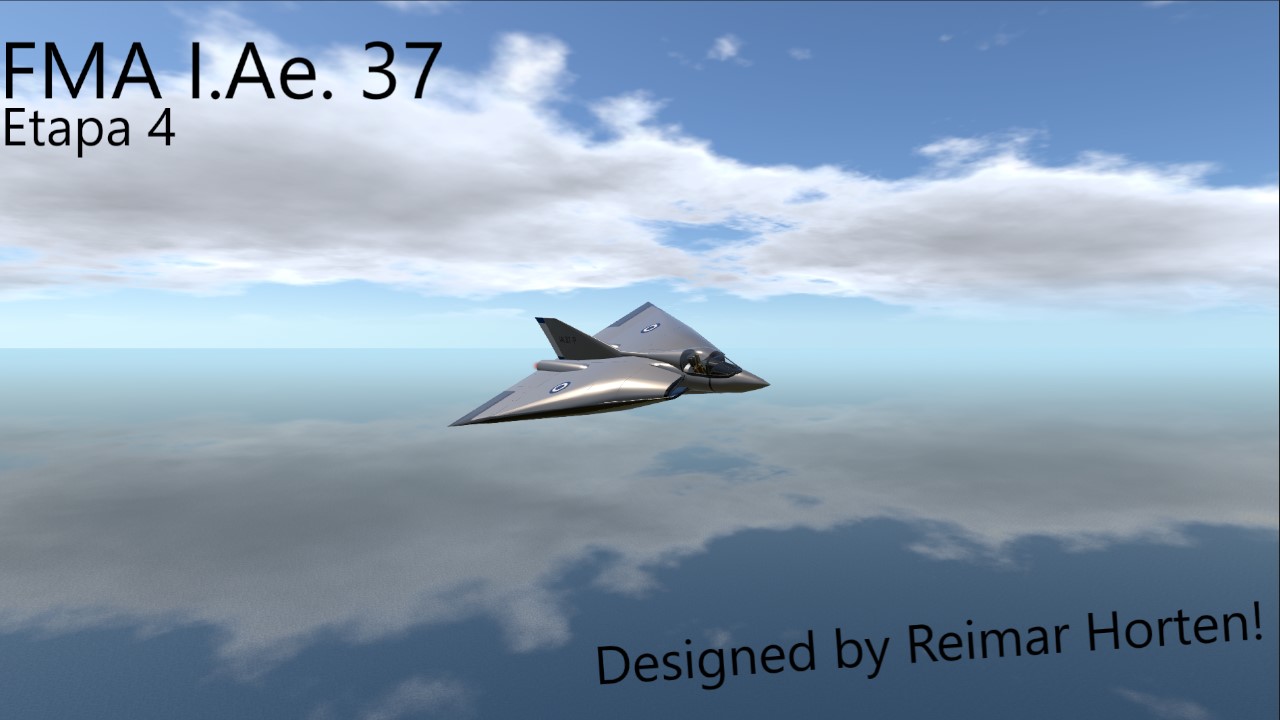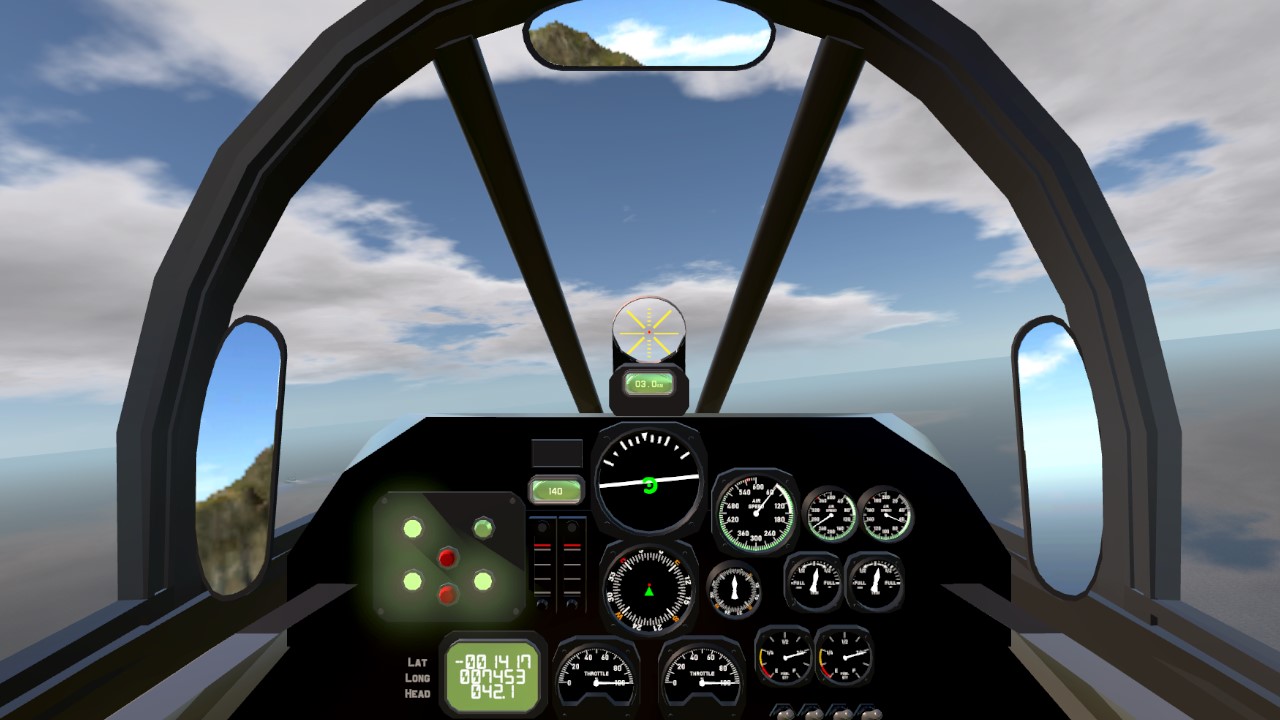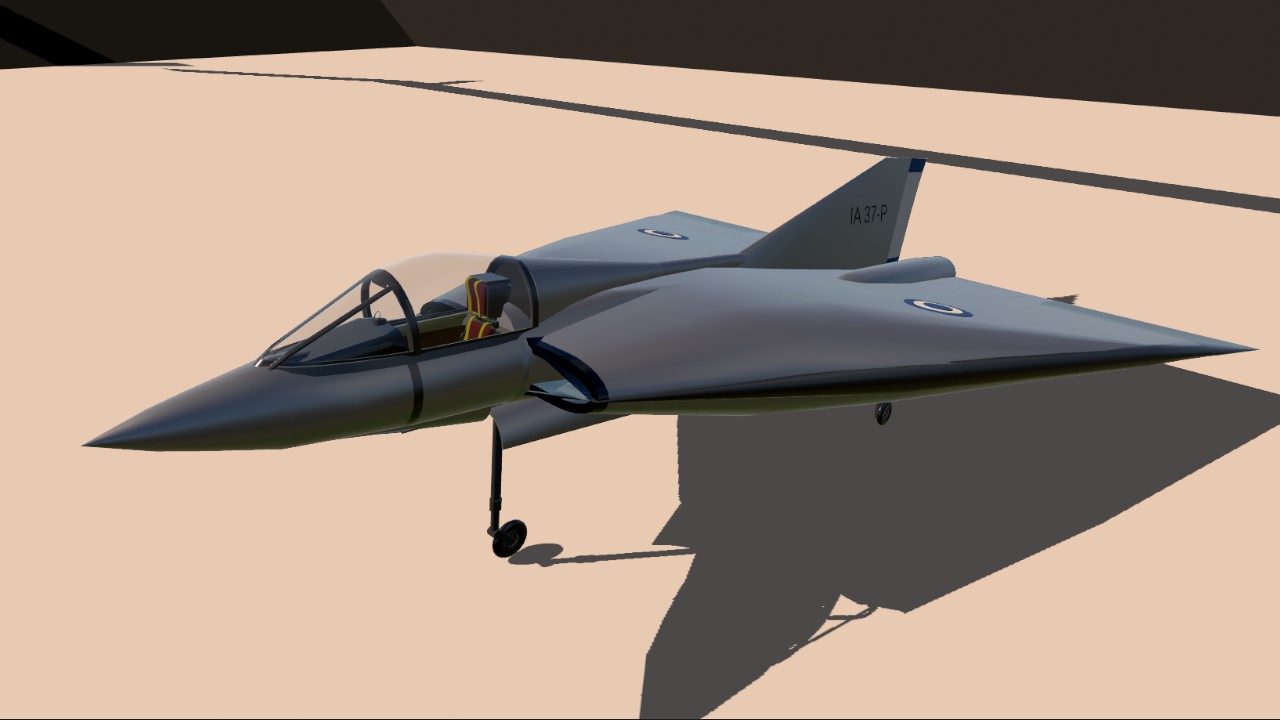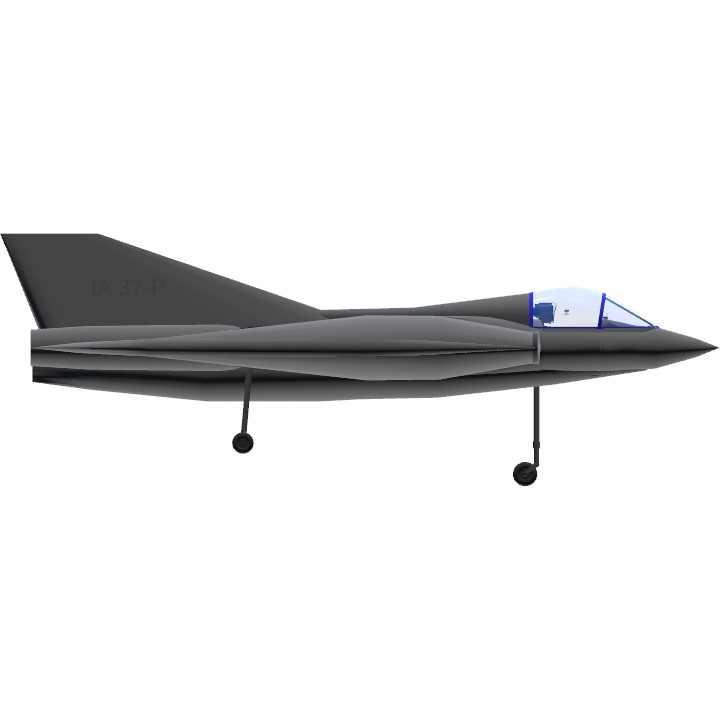Fábrica Militar de Aviones, Instituto Aerotécnico 37, Fase 4
-Loyal or Rebel!?-
-Loyal!-
History:
During the First Five-Year Plan in Argentina, the government of Juan Domingo Perón decides to give a huge impulse towards development of heavy and defense industries, and Argentine aeronautic industry consequently.
Under this political sponsorship, IAME (Industrias Aeronáuticas y Mecánicas del Estado) started to build with local raw materials fuselages and undertake manufacture of aerial engines, putting Argentina at the vanguard of Latin-American aviation industry.
Likewise, the 1950 decade contemplated a series of wide technical advances on the aeronautical field with Argentina starting in 1946 the development of jet fighter I.Ae 27 Pulqui I and in the beginning of 1947 the swept wings reactor I.Ae. 33 Pulqui II.
But with the US achieving supersonic flight, there was a need for a national aircraft capable of such performance and capable of air combat… And that’s when Reimar Horten came in…
Initially, only the airframe was built. The first flight of the glider prototype took place October 19, 1954 by test pilot Jorge Connan Doyle, who was fired in the Revolución Libertadora of 1955 which overthrew Perón because (Doyle being a loyalist) he had the bad luck of being intercepted by a rogue patrol who arrested him amidst the coup. With new pilots testing the glider, test kept going and shortcomings were eliminated until 1958.
By this time it was decided to establish a plane turbojet Rolls-Royce Derwent 5 thrust 1832 kgf as the powerplant. The first airplane flight with proper jet engines took place in early 1961, as expected Dr. Horten. However, the aircraft could not reach the design characteristics and showed a maximum speed of 902 kph. To solve this problem, it was planned to equip IA.37 turbojet engines Rolls-Royce Avon (considered options were Avon RA.3 and Avon RA.7).
However, an accident during a test led to the cessation of further work on the aircraft. Four stages of study were planned:
Analyze behavior with a 1:10 catapultable scale model built in plywood with a weight of 5 kg; Parameters to be measured: trajectory, stability, alar profile, center of gravity; The launches were made with elastic tensors sandows in Lake San Roque; For the Supersonic Tunnel Tests were constructed models of 1:25 scale in stainless steel.
Evaluate an Esc.1: 1 glider with prone position (ventral) to study the negative G accelerations (it was sustained during those years that in rough maneuvers the pilot in that position absorbed the effects more comfortably).
Build metallic prototype with power plant ROLLS ROYCE DERWENT V of 1632 kg of thrust to 14000 r.p.m .; Fuel in three tanks, two wings and one internal ventral, with capacity of 1700 l for 2 h of autonomy; This version had to carry ejectible seat and ventral landing gear for a wheel.
Replace turbines with two ROLLS ROYCE AVON R.A. 3 of 2948 kg of thrust to achieve a speed of 1300 km / h.
Features:
• Interactive Cockpit
• Gyroscope
• Radar Tracking Sight
• Radar
• Mirrors
Controls:
• Regular controls
• AG1: Open canopy
• AG2: Activate radar tracking sight
• AG4: Gyro
• AG6: Ejection seat
Technical data:
Powerplant: x2 Rolls-Royce Avon R.A. 3 with 56 kN each
Maximum Speed: 1487 kph (registered in flight test at 10.976 mts)
Landing Speed: 110 kph (to avoid accidental stalling a speed between 120-140 kph is recommended)
Minimal Speed: 150 kph
Service Ceiling: 11.000 mts
Range: 2000 km
Wing Area: 50 mts
Empty Weight: 2306 kgs
Loaded Weight: 3672 kgs
Weapons: x2 Hispano-Suiza 20mm autocannons with explosive rounds
Gallery:







Credits:
Reimar Horten for the original design
@RussianAce for the detection radar in the attitude gauge
Specifications
Spotlights
- This craft is curated
- HOPKINS234 3.7 years ago
- 929 3.0 years ago
- X99STRIKER 3.7 years ago
General Characteristics
- Created On Windows
- Wingspan 37.6ft (11.5m)
- Length 40.8ft (12.4m)
- Height 14.3ft (4.4m)
- Empty Weight 5,082lbs (2,305kg)
- Loaded Weight 8,096lbs (3,672kg)
Performance
- Power/Weight Ratio 3.108
- Wing Loading 14.9lbs/ft2 (72.6kg/m2)
- Wing Area 544.2ft2 (50.6m2)
- Drag Points 4634
Parts
- Number of Parts 377
- Control Surfaces 0
- Performance Cost 1,553










d o r i t o s